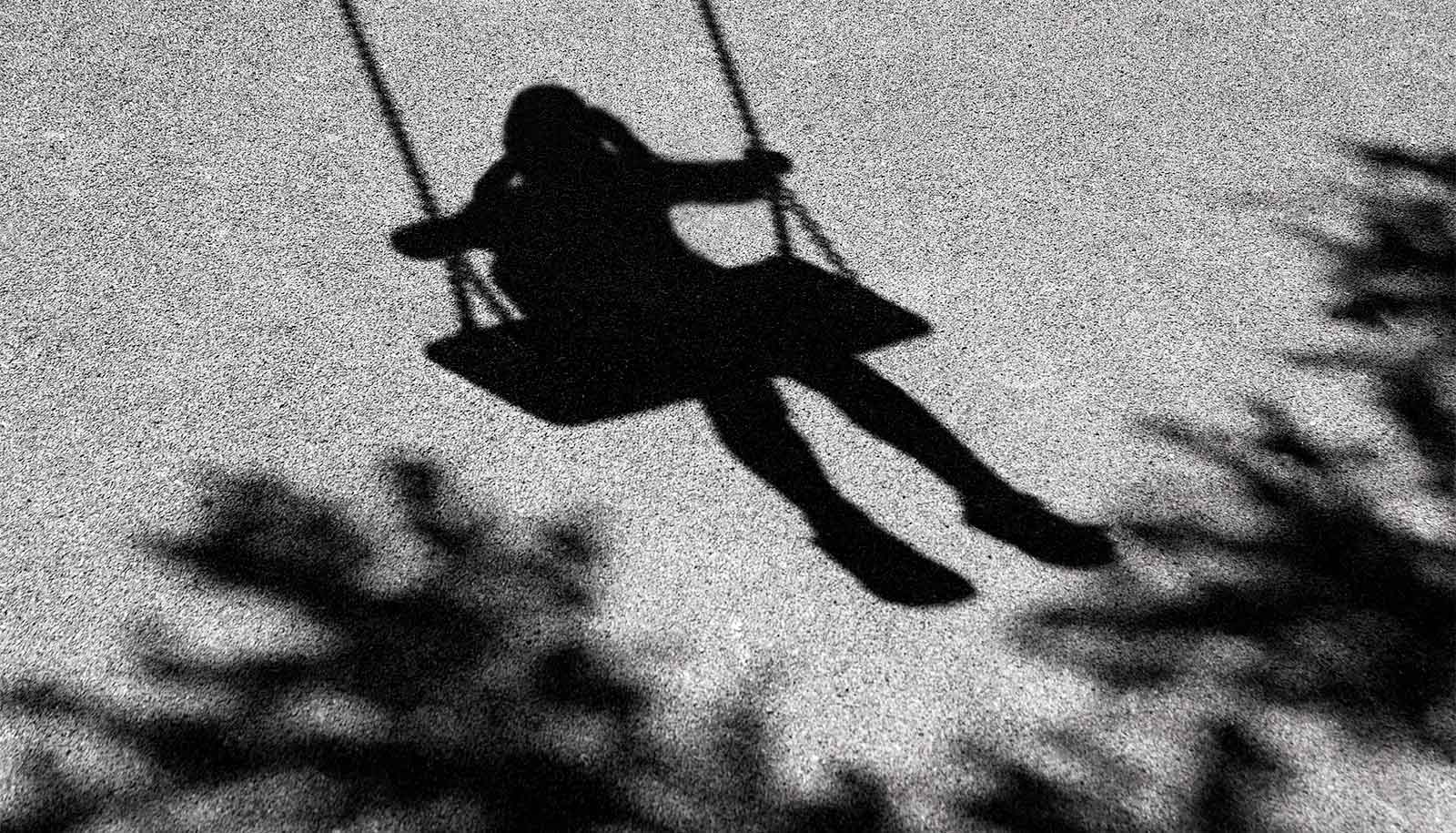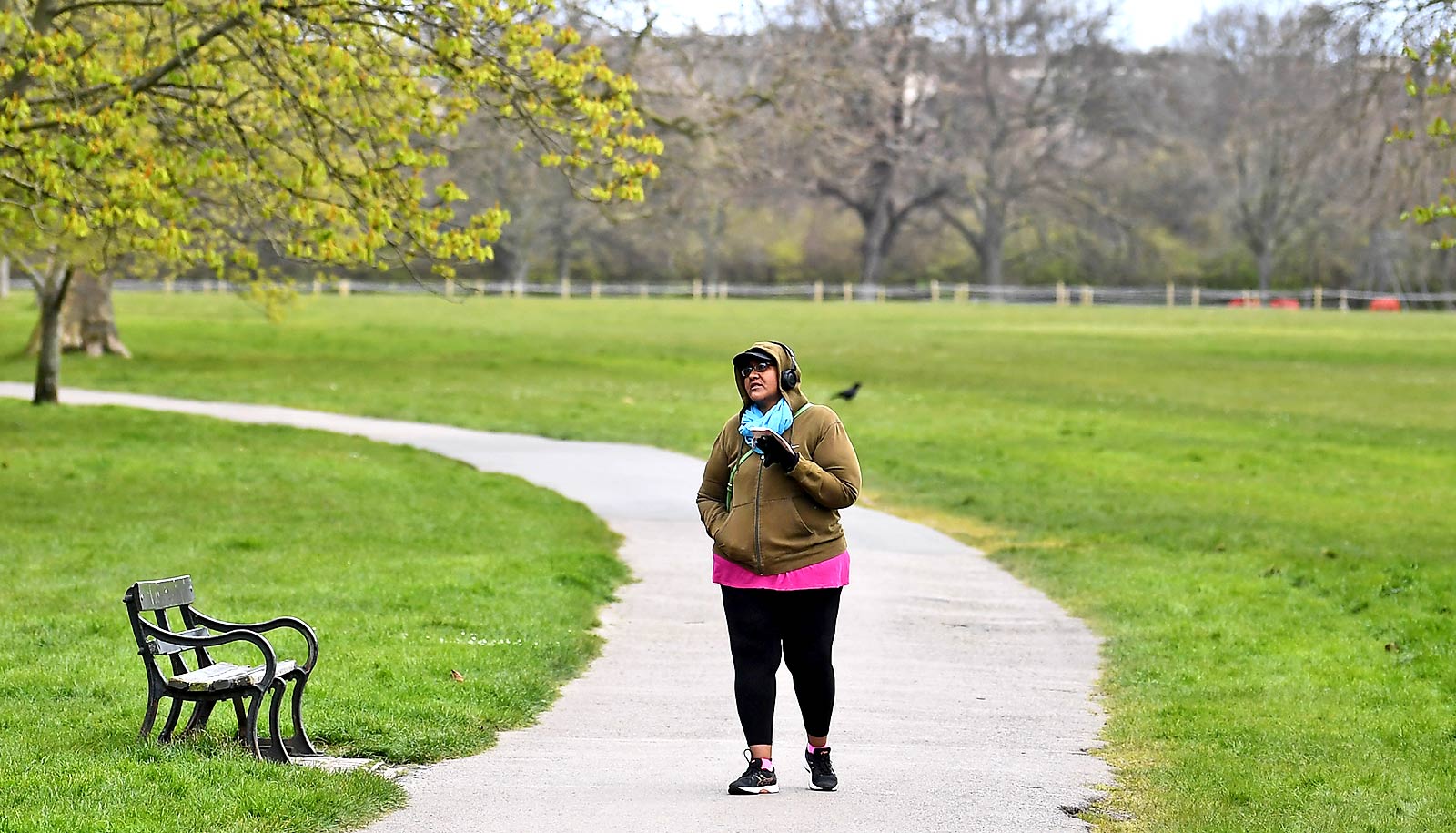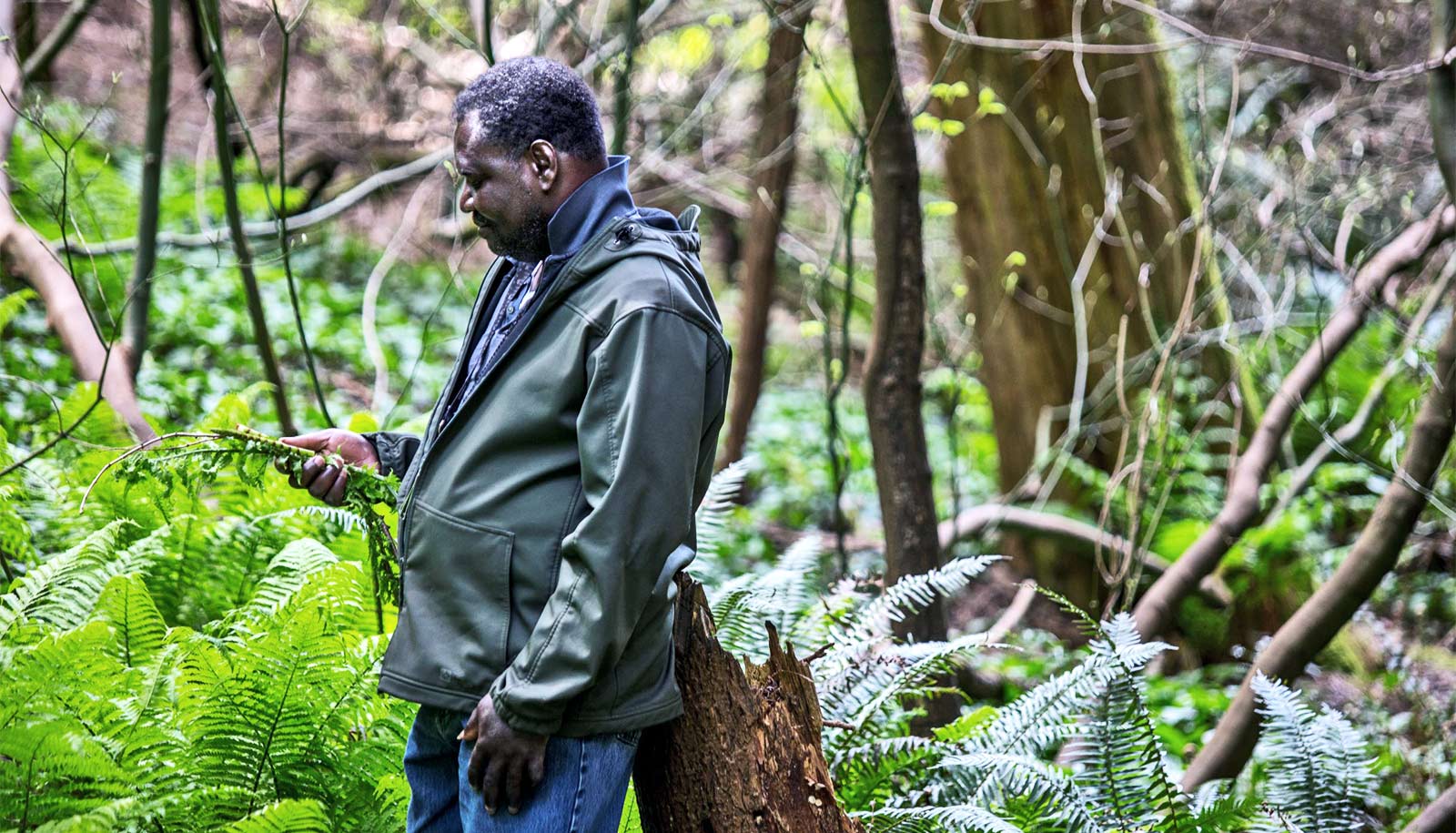Contrary to anecdotal reports of a spike in new users during the COVID-19 pandemic, fewer people used outdoor parks and trails in urban areas of North Carolina during two summer months of 2020, according to a new study.
The study also found that that the drop-off in urban park access was more likely to affect minorities and people from lower-income backgrounds.
“Visitation declined in urban and county parks pretty consistently across the state, and it dropped even more sharply among people who rarely used parks before COVID-19 and people who are lower income or racial and ethnic minorities,” says Lincoln Larson, associate professor of parks, recreation, and tourism management at North Carolina State University and lead author of the paper in Frontiers in Sustainable Cities.
For the study, researchers combined survey responses and cell phone tracking data to understand outdoor urban park use across the state during the pandemic last summer. They surveyed 611 residents of metropolitan areas of North Carolina in August 2020 and asked them to compare their use of outdoor park spaces during the pandemic to the same month in 2019.
Researchers also analyzed anonymous cell phone location data, gathered by the company SafeGraph, for people who used their phones at points of interest with “park” in the name across 66 urban areas during July 2020 and 2019.
“While certain people visited parks more, it tended to be people who were already using them. There’s a social justice issue here.”
When researchers analyzed survey data, they found that, statewide, nearly 56% of people said they stopped or decreased their use of open spaces and trails in August of 2020. Approximately 27% said their park usage didn’t change, and 16% reported increased use.
“Our data runs counter to the narrative that people were flocking to parks like never before,” Larson says. “When we dug into the data, we also found issues of equity and access.”
Urban park visit disparities
People who were already likely to visit parks before the pandemic, a group that was more likely to be white, Hispanic, or higher-income, were most likely to use parks during the pandemic.
Frequent park users pre-pandemic were 23 times more likely to increase their park use during the pandemic compared with people who didn’t visit parks before COVID-19. Sporadic park users were nine times more likely to increase their park use. Higher income people were the least likely to stop using parks.
“We know that, historically, park use has been highest among higher income, white populations,” Larson says. “During the pandemic, while certain people visited parks more, it tended to be people who were already using them. There’s a social justice issue here.”
The cell phone data analysis also revealed a decline in overall park visitation in urban areas, with visits down 15% from 2019 to 2020. While the cell phone data could have picked up people located anywhere within the boundaries of a park, researchers speculated that many visitors were likely outdoors in 2020 due to closures of indoor facilities.
Parks boost mental health
Using census data, the researchers found links between measures of social vulnerability and park visitation. Specifically, they saw a trend of census tracts with lower socioeconomic status linked with lower park visitation. Areas with more people who identified as Black, Indigenous, Hispanic or Latinx, Middle Eastern or North African, or “other,” were also more likely to see declines in park visits.
“We know that parks are really important in terms of mental health, especially during the pandemic, when being outdoors was considered more of a safe space, but this suggests not all segments of the population were realizing those benefits,” Larson says. “Like many things during COVID-19, the disparities are getting worse. We need to think longer and harder about park equity and access across racial, ethnic, and income boundaries.”
The researchers caution that the study focused on urban and suburban areas, and did not look at national or state parks in more rural areas, However, they did underscore that their findings show the need to make sure that all people, across racial, ethnic, and income levels, have access to parks in urban areas. They also say finding ways to keep parks open and utilized in low-income areas is critical.
“These findings should inspire parks and recreation professionals to look at their planning and outreach processes to determine if they are engaging socially vulnerable populations,” says coauthor Matt Carusona, director of programs and marketing for the NC Recreation and Park Association, an organization that helped fund the study.
“Not only do parks and recreation professionals need to make sure that socially vulnerable people have access to parks, but they also need to review if they are creating a welcoming atmosphere for their entire community. Ensuring marketing and outreach efforts are inclusive and appropriate for all is important, and so is having a community planning process for parks and recreation that is accessible to diverse communities—especially during a pandemic.”
Source: NC State


